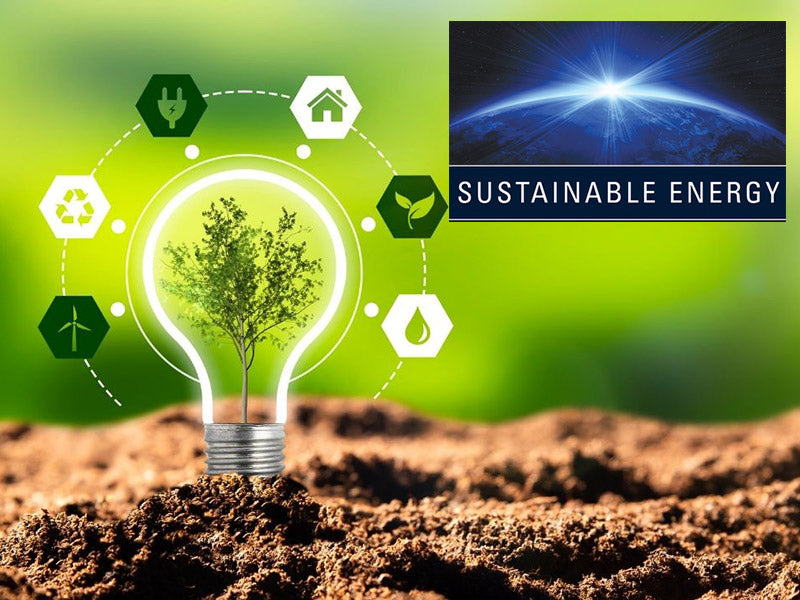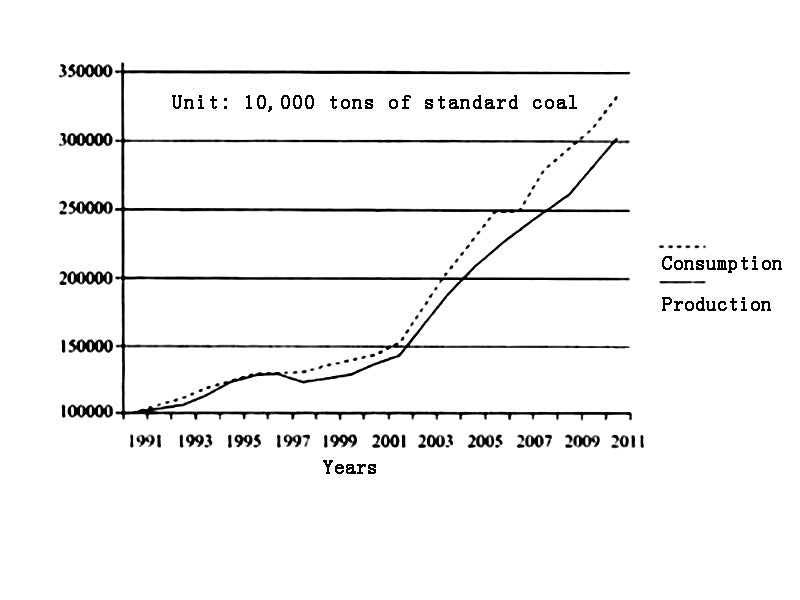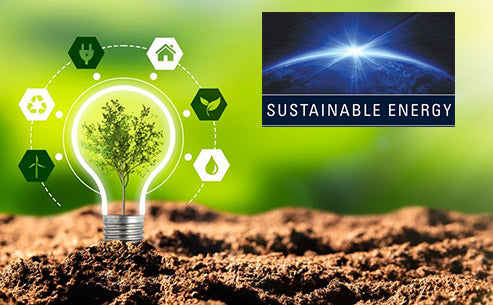
Energy is one of the driving forces for social development and an indispensable material resource for the survival and development of human society. In modern society, energy is also one of the lifelines of a country's economic and social development. Since the Industrial Revolution, the consumption of energy by human society has increased dramatically. In the past 20 years, China's energy production and demand have increased several times (see Figure 1). And in the next period of time, the global energy consumption will show a faster growth trend. So far, the world's energy consumption is mainly non-renewable energy. However, the world's proven reserves of non-renewable energy are quite scarce. It is estimated that in the next few decades, all kinds of non-renewable energy resources will be exhausted according to the current ratio of reserves and extraction (reserve-production ratio). Even with the continuous progress of science and technology, more resources can be proved, and the service life of various energy resources can be relatively extended, but in any case, this non-renewable energy resource will be exhausted in the near future. Therefore, human beings need to save non-renewable energy resources on the one hand and prolong the use time of existing energy resources; on the other hand, it is necessary to find new renewable energy resources to replace non-renewable energy resources, and finally solve the energy problems faced by human development.

The use of energy also brings serious environmental pollution and destruction problems on the earth. Major current global environmental issues, including the greenhouse effect and global warming, the destruction of the ozone layer, the formation of acid rain, air pollution, etc., are more or less related to the process of mining, transportation, processing, conversion, utilization and consumption of non-renewable energy resources. The environmental problems caused by energy use are mainly manifested in the following aspects:
(1) Greenhouse effect
According to statistics, from the Industrial Revolution to 1959, the concentration of carbon dioxide (CO2) in the atmosphere increased by 13% (volume fraction), and from 1959 to 1997, the concentration of carbon dioxide in the atmosphere increased by another 13% (volume fraction), resulting in an accelerated global warming trend. Compared with 100 years ago, the global average temperature has increased by 0.61℃. Computer predictions show that when the concentration of gases such as carbon dioxide increases by twice the current level, the average temperature of the ground will rise by 1.5 to 4.5 degrees Celsius. This would cause the Antarctic icebergs to melt, raise sea levels and inundate large swathes of land, while disrupting the ecological balance.
(2) Destruction of the ozone layer
Ozone (O3) is an isomer of oxygen, which exists in the stratosphere about 35km from the ground to form the ozone layer. The ozone layer absorbs most of the ultraviolet rays of the sun's rays that are harmful to humans, animals and plants, and is the earth's shield against ultraviolet radiation. However, due to the continuous increase in energy consumption since the Industrial Revolution, humans have excessively used HCFCs as refrigerants and for other purposes, and the N2O produced by fuel combustion causes the ozone in the ozone layer to be rapidly reduced by a large number of cyclic reactions, forming the so-called ozone layer hole, leading to the destruction of the ozone layer. This will lead to the destruction of the shields of humans, animals and plants on Earth from harmful UV radiation, which increases the probability of human beings suffering from skin cancer and other diseases, endangers human health and survival, endangers the animals and plants on the earth, and leads to the destruction of ecological balance.
(3) Acid rain
The burning of fossil fuels, especially coal, produces large amounts of sulfur dioxide (SO2) and nitrogen oxides (NOx). When rainwater absorbs a large amount of SO2 and NOx in the near-ground pollution layer, acid rain with a pH lower than normal (pH<5.6) will be produced. The formation of acid rain will increase the acidity of the soil, affecting the healthy growth of trees and crops; acid rain will increase the acidity of lake water, destroy the aquatic ecosystem, and disappear some fish and aquatic organisms; acid rain can cause corrosion of buildings, bridges, dams, industrial equipment, scenic spots and tourist facilities; acid rain also increases the acidity of groundwater and river water, which directly affects the quality of drinking water for humans and livestock, and affects the health of humans and animals.
(4) Air pollution
Mass burning of fossil fuels such as coal emits large amounts of air pollutants such as dust, smog, SO2, NOx and hydrogen sulfide (H2S). On the one hand, they directly pollute the atmospheric environment and endanger human health and life; on the other hand, the interaction of these pollutants will produce more harmful pollutants, such as sulfuric acid mist and suspended sulfate. The accumulation of these pollutants, if not dissipated in time, will form haze weather and cause serious smog events.
(5) Other pollution
In addition to the large amount of pollutants produced when coal, oil and natural gas are used as fuels, there are some other pollutions in the process of energy production, transportation and consumption. For example, during offshore drilling and oil production, the oil storage structure rock ruptures and the pollution caused by oil leakage caused by oil tanker transportation accidents. The oil spill in the U.S. Gulf of Mexico on April 20, 2010 caused 12,000 to 100,000 barrels of crude oil per day to leak into the Gulf of Mexico, causing at least 2500km2 of seawater to be covered with oil, and the water quality in a large area near the oil spill was seriously polluted, and many fish, birds, marine life and even plants were seriously affected. The environmental radiation problem caused by the use of nuclear energy is also a global environmental problem caused by the use of energy by human beings. Although hydropower is clean energy, it also has corresponding environmental problems. For example, building dams and building reservoirs have certain impacts on ecological balance, land salinization, irrigation, and shipping.
In the face of increasingly exhausted non-renewable energy resources and deteriorating environmental quality, the fundamental way to solve the current energy and environmental problems faced by human beings is to achieve sustainable development of energy and environment. For the future of future generations and the sustainable development of society, it is necessary to have a sustainable energy supply way that is compatible with the sustainable development of society, solve the problem of environmental pollution in the process of energy consumption, and take the road of sustainable energy development and utilization. In the long run, the development and use of renewable energy is the ultimate way to achieve sustainable energy and environmental development. To this end, all countries are making plans, taking measures, organizing forces, and vigorously developing renewable energy, trying to transition from the more polluting conventional non-renewable energy sources to a diversified energy structure including a larger proportion of renewable energy sources in a short period of time.
Building energy consumption accounts for a considerable proportion of the country's total energy consumption. In developed countries, building energy consumption accounts for more than 30% of the country's total energy consumption. With the continuous improvement of people's living standards, the proportion of building energy consumption in China's total energy consumption is also increasing year by year. Moreover, with the continuous development of China's economy and the continuous improvement of people's living standards, the proportion of building energy consumption will further increase. China is in the peak period of urban construction, and urban construction is developing rapidly. The resulting problem of building energy consumption will cause huge pressure on China's energy supply and environmental protection, reducing, not increasing, or at least not increasing too much. Building energy consumption is of great significance to alleviating the pressure on China's energy supply and promoting the sustainable development of China's energy environment. In building energy consumption, more than 60% (even as high as 80%~90%) belongs to building operation energy consumption. Therefore, reducing building operation energy consumption, especially building air-conditioning heating energy consumption, has more important significance. To achieve this, we must vigorously promote the use of renewable energy in buildings, as well as new energy-saving and environmentally friendly HVAC technologies, and take the road of sustainable building energy.
















